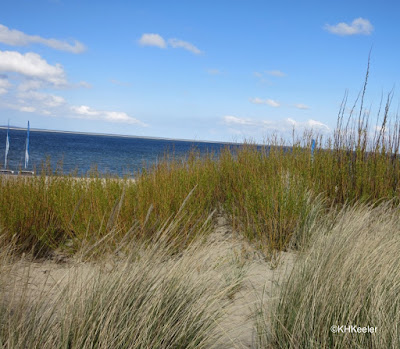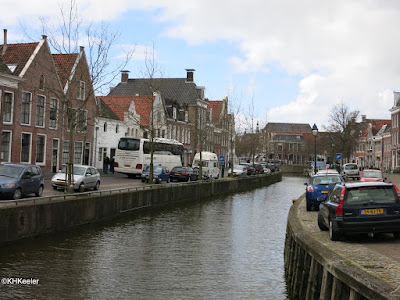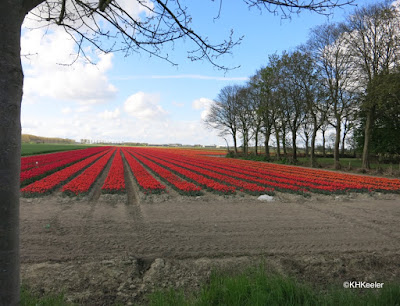 |
| the Frisian Coast |
I first remember asking that question in reaction to a Great Courses course (link) about the Vikings. The Vikings came out of Scandinavia as raiders about 700 AD. Better ships, more seaworthy on rougher seas, made that possible, but authors only speculate on the social and cultural forces that motivated Scandinavians to become Vikings. Before 700, the people of Scandinavia were thought to be a backwater of Europe. But not really so backward, the course suggested, because they traded with the Frisians who traded with the Romans, so that all manner of Roman Empire technology made its way into Scandinavian villages.
So who were the Frisians? When a tour (National Geographic Expeditions, see details) offered a stop on the Frisian Islands, I was in!
 The quick answer is: the Frisians were the people who lived on the Frisian Islands and the Frisian Islands lie just off the west coast of Europe, running just off the coast from what is now Denmark, Germany and the Netherlands.
The quick answer is: the Frisians were the people who lived on the Frisian Islands and the Frisian Islands lie just off the west coast of Europe, running just off the coast from what is now Denmark, Germany and the Netherlands.Or, Frisians are people who speak Frisian. There is a distinct language, Frisian, a Germanic language, related to Danish, German and Dutch. Actually, Frisian is a group of languages. The similiar but distinct languages are West Frisian, spoken in the northern Netherlands and often just called Frisian, North Frisian, spoken in Schleswig-Holstein on the northwestern edge of Germany, and East Frisian, spoken in Lower Saxony, the German state just south of Schleswig-Holstein.
However, little is known of the Frisians of who traded with the Romans. They were clearly good sailors and active traders.
 |
| Traditional Frisian fishing boats |
 |
| The canal drains water off the fields |
By 1100, the Frisians started changing the land. In the 11th century, Frisians built the first dikes and pumped the sea water out to make agricultural fields. Several of the guides on my tour referred to the date, but nobody said much about it. But that is about the time of the development of wind mills. Mill technology has its roots in ancient times, but in the early Middle Ages, Europeans developed mills for grinding grain that harnessed both river power and the tidal surge. These mills brought great profit to the owners and so spread across Europe. Putting "sails" on them to use wind power, around a central pole so the mill would turn in winds from different directions, was a critical innovation, dated to about 1200. The Frisians adapted this mill to their own needs, employing a wind-powered mill to pump water not grind grain. Steadily they developed the technology to remove the water from low-lying lands and create fields below sea level (polders). I imagine there are methods for pumping out seawater without a windmill, but--think about it--without a machine, removing the relentlessly seeping water would back-breaking. The iconic Dutch windmill's invention coincides with the beginnings of the reclamation of land from the North Sea.
Between 1100 and 2015, the Frisians, now called the Dutch, built dike after dike, turning the shallow sea off their coast into productive farmland. One by one they connected the southernmost Frisian islands to the mainland (See map. The "land below sea level" was once ocean.) Consequently many of the Frisian islands now are part of mainland of Europe, distinguished as coastal sand dunes today. Technological advances and increased understanding of water systems have led to steadily more efficient reclamation of the shallowly-flooded lands. Windmills are not so easy to spot today because they are "old technology": state-of-the-art wind turbines pump water much more efficiently.
 |
| Wind turbine |
The Frisians were fine sailors who built seacoast towns that were more easily reached and crossed by boat than by foot or wheel. The canals in the coastal towns were not ornaments--as a visitor from midcontinent like me might think--but "roads," more reliable than soaked soil for travel. Today, the dominance of cars has forced the filling of some canals in towns like Texel and Amsterdam, but the canals remain an important form of transport.
Along the Frisian coast, the sea is very shallow, and perhaps more will be reclaimed in the future. Huge flocks of migratory birds use the coast annually, feeding in the shallow waters. The Netherlands has extensive preserves to protect the coastal feeding zones the birds need. Bird watching is generally quite spectacular, especially for Americans for whom these are unfamiliar bird species. My bird life-list is pretty casual, but it now includes European spoonbills!
 |
| The sea off Frisia at low tide |
The Frisians who traded with the Romans wouldn't recognize the place!
Comments and corrections welcome.
References:
Gimpel, J. The Medieval Machine. The Industrial Revolution of the Middle Ages. Penguin Books, New York. 1977.
Shorto, R. Amsterdam, a History of the World's Most Liberal City. Vintage Books, New York. 2013.
Kathy Keeler




This looks DREAMY!!!! Ugh, take me there now. Very beautiful pictures. I loved reading your post. Incredible post.
ReplyDeletespain road trip